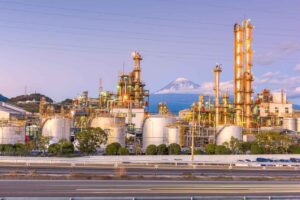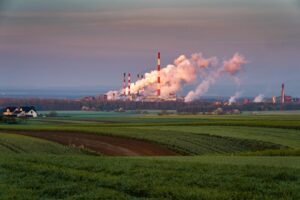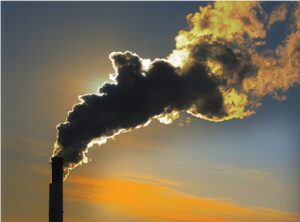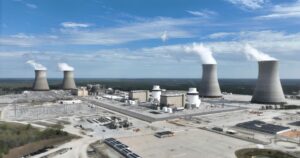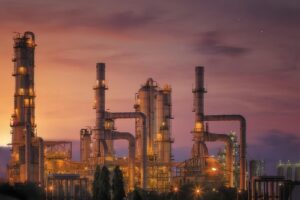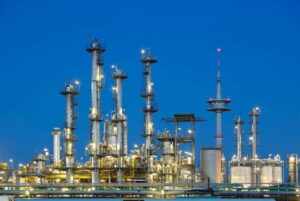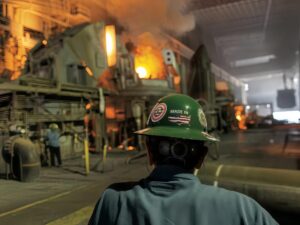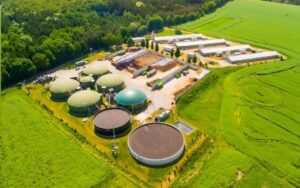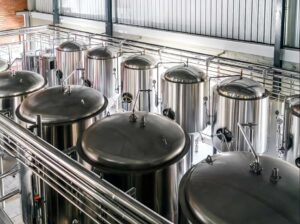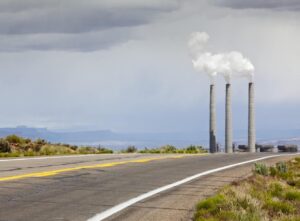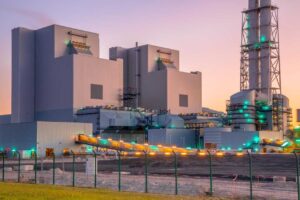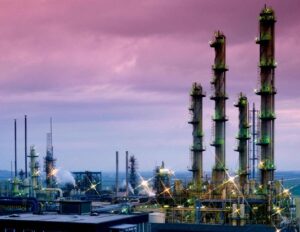The rising urgency of climate change demands more than awareness—it requires action backed by precise data. Yet, many industries and institutions still rely on outdated or imprecise equipment to monitor greenhouse gas emissions, risking regulatory non-compliance, research inaccuracies, and missed mitigation opportunities. Enter the ESE-GH-2080 Greenhouse Gas Analyzer: a high-precision instrument designed to deliver real-time, multi-gas analysis across demanding environments.
The ESE-GH-2080 is a high-performance analyzer engineered to simultaneously measure CO₂, CH₄, and N₂O with superior sensitivity and accuracy.
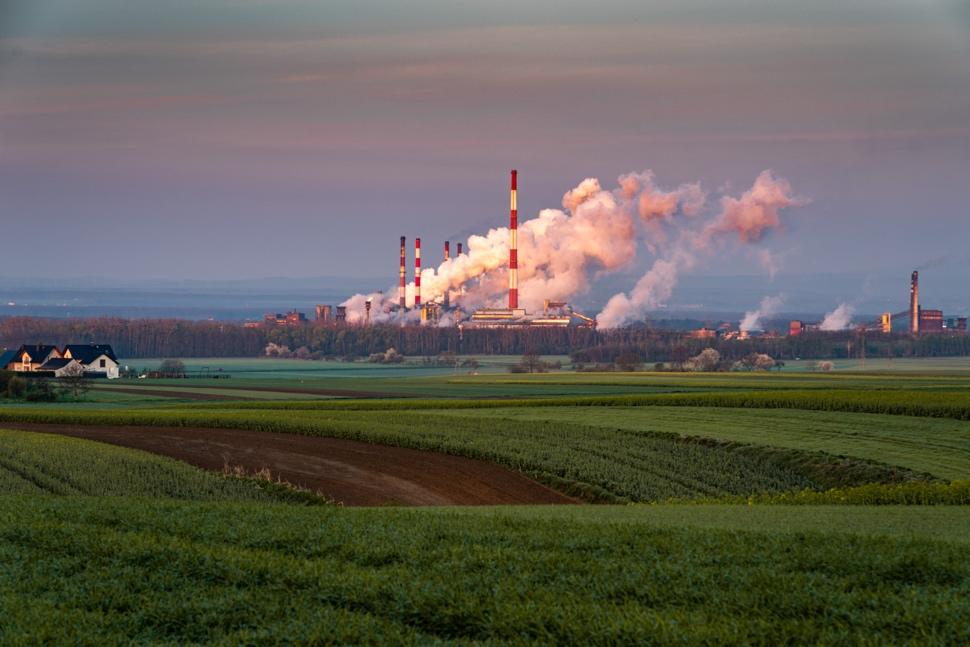
Using advanced mid-infrared laser absorption spectroscopy (MIR-LAS) and proprietary optical detection technology, the ESE-GH-2080 provides laboratory-grade performance in both field and stationary setups. Designed for environmental research, industrial emissions monitoring, and agricultural gas studies, it meets the rigorous demands of both scientists and regulatory bodies. Key specifications include sub-ppm resolution, real-time data output, and built-in calibration functions for enhanced reliability.
Why does a high-accuracy Greenhouse Gas Analyzer matter now more than ever?
Climate commitments are tightening, funding for climate research is expanding, and governments are issuing stricter emissions caps. But what good is a policy without dependable data to back it up? That’s why choosing the right analyzer is no longer optional—it’s critical. Let’s explore why the ESE-GH-2080 stands out and how it meets today’s measurement challenges.
How does the ESE-GH-2080 Greenhouse Gas Analyzer work?
Conventional sensors struggle with precision. This analyzer doesn’t.
Environmental and industrial teams often rely on conventional gas analyzers that lack selectivity, suffer from signal interference, and require frequent recalibration. These limitations not only reduce measurement accuracy but also compromise long-term data integrity. The ESE-GH-2080 Greenhouse Gas Analyzer solves this problem by integrating advanced Mid-Infrared Laser Absorption Spectroscopy (MIR-LAS) with robust real-time processing and automatic correction algorithms, ensuring laboratory-grade accuracy under real-world conditions.
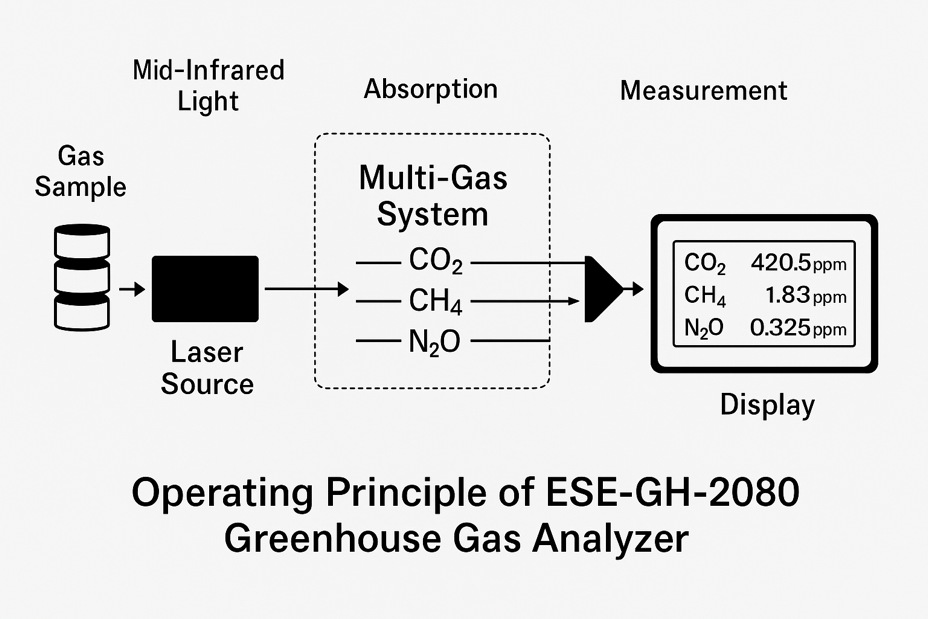
The core technology: Mid-Infrared Laser Absorption Spectroscopy (MIR-LAS)
- Gas-specific laser tuning: Each greenhouse gas—CO₂, CH₄, and N₂O—has a unique absorption fingerprint in the mid-infrared range. The analyzer emits laser light at these exact wavelengths.
- Optical absorption detection: As the light passes through the gas sample, molecules absorb energy at their characteristic bands. The reduction in light intensity correlates directly to gas concentration.
- High-resolution sensors: The ESE-GH-2080 uses custom photodetectors that convert light changes into accurate gas concentration readings.
Real-time signal processing and compensation
- Dynamic baseline correction: Environmental drift, temperature variation, and humidity are automatically compensated to maintain signal stability over time.
- Smart calibration algorithm: The system includes auto-calibration routines that verify and correct sensor drift using reference gases or internal standards.
- Rapid response rate: The analyzer provides updated readings at sub-second intervals, making it suitable for applications requiring real-time monitoring.
Multi-gas parallel detection
Unlike single-gas detectors, the ESE-GH-2080 is equipped with multi-channel optics and a parallel measurement architecture, enabling the simultaneous detection of:
| Gas | Detection Range | Resolution |
| CO₂ | 0–2000 ppm (standard) | 0.1 ppm |
| CH₄ | 0–100 ppm (extendable) | 0.01 ppm |
| N₂O | 0–100 ppm (extendable) | 0.01 ppm |
Each gas path is isolated to prevent cross-interference, which is common in traditional IR-based analyzers.
Robust system design for field use
- Anti-condensation optical design: Ensures clear signal transmission even in humid or variable outdoor conditions.
- Shock-resistant chassis: Protects sensitive optics and electronics during transport or mobile deployments.
- Low-maintenance: Designed for long-term operation with minimal user intervention.
Data interface and connectivity
- Digital output formats: USB, RS-232, Ethernet—compatible with data loggers and SCADA systems.
- Cloud-ready architecture: Optional modules support real-time data streaming to remote servers.
- User interface: Integrated touchscreen and web-based GUI for configuration, diagnostics, and real-time visualization.
In which industries or environments is the ESE-GH-2080 Greenhouse Gas Analyzer most valuable?
Emissions aren’t one-size-fits-all—and neither is this analyzer.
Greenhouse gas emissions vary wildly depending on the source: from steady-state industrial chimneys to unpredictable releases in wetlands and farmlands. Traditional analyzers often fail to adapt across these diverse conditions, leading to inconsistent results or expensive overengineering. The ESE-GH-2080 Greenhouse Gas Analyzer is designed with this complexity in mind. Its flexible architecture, high-precision detection, and rugged design make it ideal for a wide array of sectors where accuracy, reliability, and real-time analysis are critical.
Key industries and environments where the ESE-GH-2080 excels
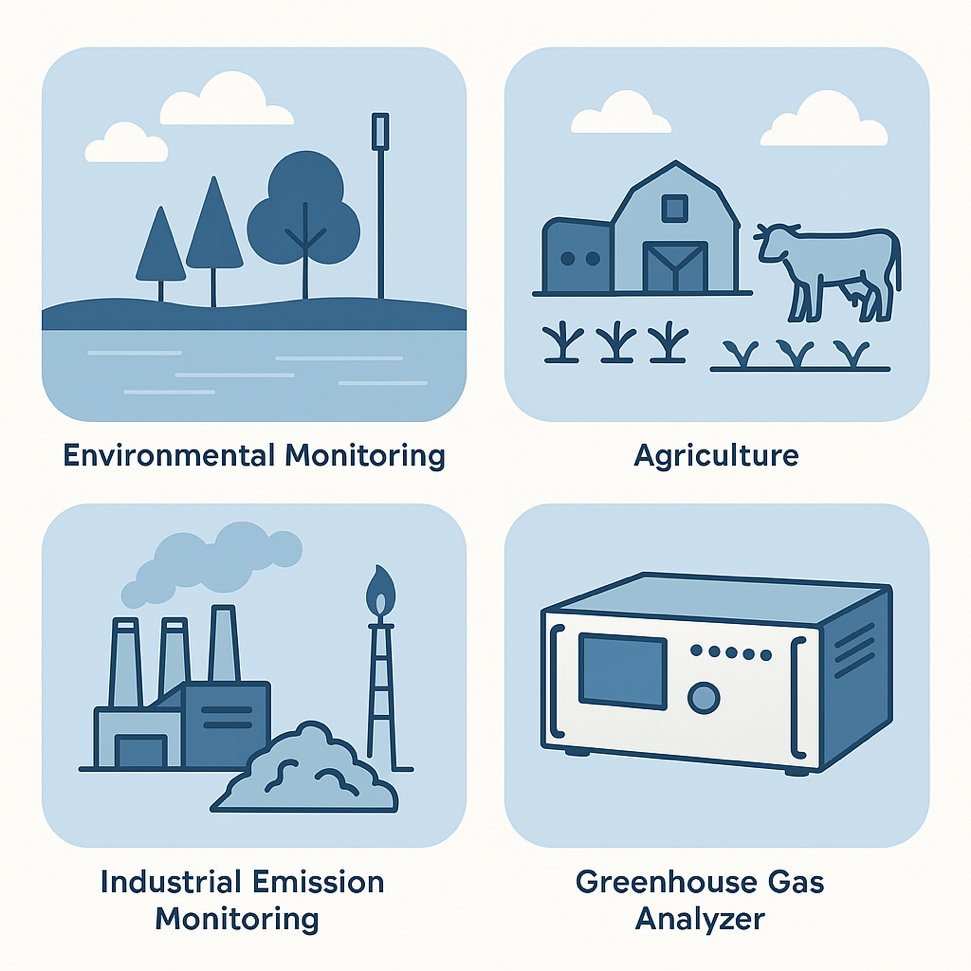
1. Environmental and Climate Science
Application Scenarios:
- Long-term monitoring of atmospheric CO₂, CH₄, and N₂O levels
- Eddy covariance towers and flux chambers in remote field stations
- Wetlands, forests, peatlands, and urban green zones
Why It’s Valuable:
- Ultra-low detection limits support trace gas studies
- Lightweight and portable for field deployments
- Real-time feedback improves temporal resolution in climate models
2. Agriculture and Soil Science
Application Scenarios:
- Measuring N₂O and CH₄ emissions from fertilized fields
- Monitoring GHG flux from livestock and manure management
- Researching soil respiration and carbon sequestration
Why It’s Valuable:
- Supports precision agriculture and sustainable land use planning
- Enables rapid comparative analysis across treatment zones
- Helps quantify GHG offsets for carbon credit programs
3. Industrial Emission Monitoring
Application Scenarios:
- Flue gas analysis in power plants, cement factories, and refineries
- Leak detection in natural gas infrastructure
- Process control in chemical manufacturing
Why It’s Valuable:
- Robust design handles high-temperature or corrosive sampling environments
- Real-time output supports immediate compliance verification
- Integration with SCADA or plant control systems enhances automation
4. Waste Management and Biogas Plants
Application Scenarios:
- Landfill gas monitoring (CH₄, CO₂)
- Digesters in wastewater treatment and anaerobic digestion facilities
- Leak detection in gas storage tanks
Why It’s Valuable:
- Capable of continuous, unattended monitoring
- Differentiates target gases even in complex biogenic gas mixtures
- Reduces safety risks by enabling proactive gas management
5. Academic and Laboratory Research
Application Scenarios:
- Controlled chamber studies
- Gas kinetics and reaction experiments
- Teaching and demonstration in environmental science labs
Why It’s Valuable:
- Plug-and-play operation for fast setup
- High-resolution data output supports peer-reviewed research
- Supports complex experimental designs with programmable sampling
In short, the ESE-GH-2080 is not just adaptable—it’s purpose-built to meet the distinct needs of science, industry, and environmental management. Whether it’s used in the field, on a factory floor, or inside a research lab, it delivers dependable insights for better decision-making.
What makes the ESE-GH-2080 stand out from other analyzers?
Designed with researchers in mind, and performance at the core.
Unlike generic gas monitors, the ESE-GH-2080 Greenhouse Gas Analyzer is tailored for high-resolution, science-grade measurements. Here’s how it differentiates itself:
| Feature | ESE-GH-2080 | Conventional Analyzer |
| Gases Measured | CO₂, CH₄, N₂O | Usually 1-2 gases |
| Detection Principle | MIR-LAS | Electrochemical or IR |
| Detection Range | Sub-ppm | ppm to % range |
| Calibration | Automated | Manual or limited |
| Data Output | Real-time, digital, integrated | Often analog, less flexible |
This level of precision and reliability reduces time lost to recalibration, error correction, and post-analysis filtering.
Conclusion: Why choose the ESE-GH-2080 for your GHG monitoring?
The ESE-GH-2080 Greenhouse Gas Analyzer is more than just a sensor—it’s a scientific instrument engineered for those who require clarity in a climate-critical world. With advanced detection technology, field-ready durability, and multi-application flexibility, it supports everything from policy compliance to pioneering research. For any organization serious about understanding and reducing greenhouse gas emissions, this analyzer delivers trusted performance where it counts most.
if want to learn more about the greenhouse gas analyzer, please contact us directly!






